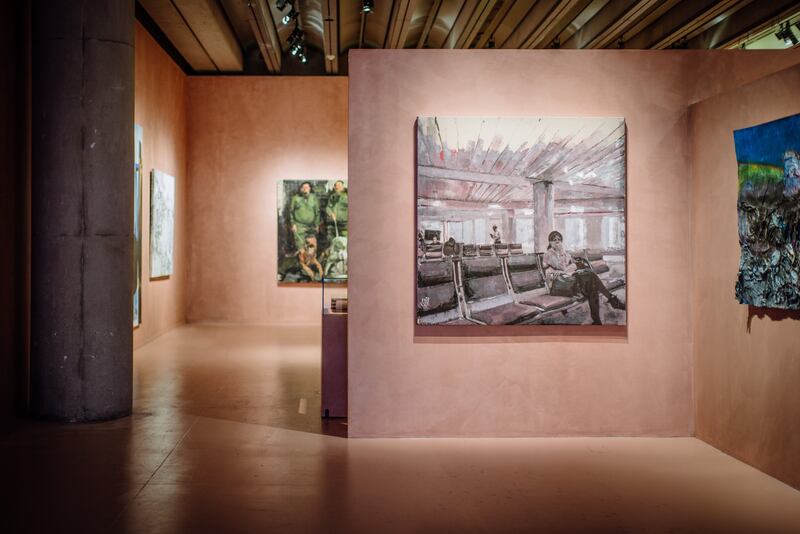As Lebanon enters another month of darkness thanks to consistent power cuts, a new exhibition in Paris focuses instead on the decades of artists who brought the country into the spotlight.
“Artists often say that Lebanon has exceptional light. For me, this 'light' is the luminaries who made Beirut a shining city of the East throughout every decade of its troubled history,” says Claude Lemand, a Franco-Lebanese collector who lives in Paris, and co-curator of the exhibition Lumieres du Liban, or Lights of Lebanon, which opened last month at the Institut du Monde Arabe.
The exhibition presents works by 55 artists from Lebanon from the 1950s to present day. “The show bears witness to the bright face of another Lebanon. Its artists are neither strictly western nor eastern, they belong to this country,” says Lemand.
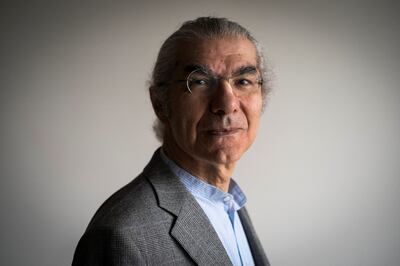
Eleven younger artists in the exhibition, aged between 21 and 35, were selected by open call to participate in the show. The commissioned works were acquired by Claude and France (his wife) Lemand and donated to the Institut du Monde Arabe's permanent collection. “We asked them to propose a work about Beirut,” says Lemand. Most of the works on display form part of the Lemands’ donation of 1,600 artworks from the Arab world since 2018.
The exhibition begins in the present day and traces the country’s history back to the Lebanese Civil War and the “golden” decades of the 1950s and '60s. “Given that Lebanon is increasingly in the dark, we chose to begin with the present-day context, and move back in time towards the Golden Age,” says Lemand.
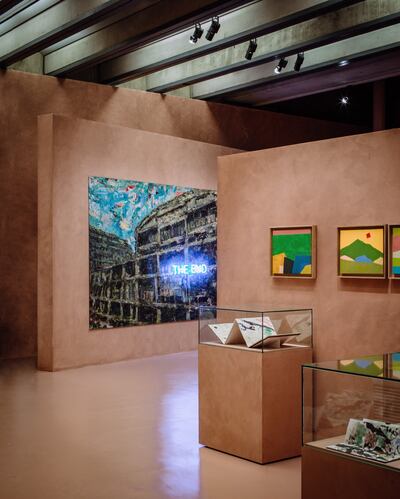
But it’s not all light and optimism that the exhibition evokes. Stairs lead visitors to the lower ground space. “It’s like the descent into hell,” says Lemand. Upon entering, visitors see Ayman Baalbaki’s The End (2016), a painting of a concrete building’s foundations with the neon inscription “The End”. The work evokes the sense of an ending that is present in Beirut today.
Beyond that, the room reveals the flourishing moments of Lebanon’s art scene with a series of paintings by Etel Adnan, and artist Taghreed Darghouth’s celebratory The Tree Within. A Palestinian Olive Tree (2020). Other works, such as composer and visual artist Zad Moultaka’s Apocalypse Beyrouth 6h10 (2020), refer to the country’s recent economic and social turmoil.
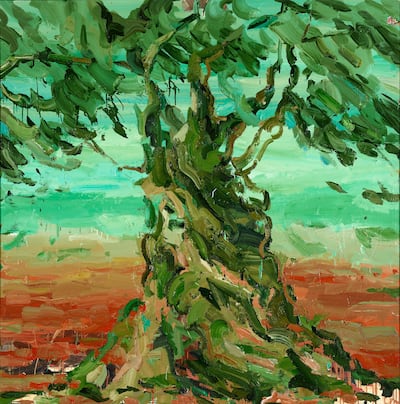
The exhibition’s youngest artist, Elias Nafaa, 24, produced a room-sized installation centred on Syrian singer Asmahan’s performance of Layali al-Ons in Vienna in 1944. The song, which has been “deconstructed” for the exhibition, bears an Arab identity, while fantasising about the West.
The Museum’s Salle Hypostyle, noted for its Postmodern colonnade, has been turned into an indoor sculpture park. There, Lebanese-Senegalese artist Hady Sy’s sculpture Beirut 6:09 (2020) commemorates the August 4 port explosion. In the ensuing rooms are works by Modern art masters including Paul Guiragossian, Shafic Aboud and Saliba Douaihy.
Regional artists living in Lebanon are an important part of the show. “The exhibition is about artists from Lebanon, not just Lebanese artists. Armenians, Palestinians, Iraqis, Syrians all made Lebanon their home,” says Lemand. “Throughout its history, Lebanon’s population was composed of persecuted communities who sought refuge in the mountains and later along the coastline.”
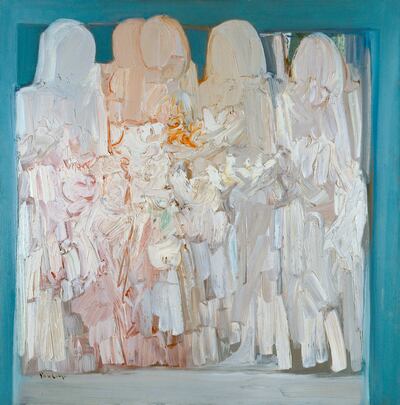
Among them in the show is Palestinian artist of Iranian descent Maliheh Afnan, and Guiragossian, the son of Armenian refugees. Recent paintings and sculptures by Iraqi-Kurdish artist Serwan Baran, who lives in Beirut, are also on display. And, in a similar vein, Lemand hopes to show the influence of Lebanon’s global diaspora. Young filmmaker Layal Nakhle was born in the Ivory Coast in 1992 and currently lives in Barcelona. Her video News from Home (2020) juxtaposes scenes from Beirut and the Catalan city.
The exhibition has been divided into three chronologically distinct sections. The first is centred on the years after the Cedar Revolution in 2005: the country went through an economic revival after the withdrawal of Syrian troops, while experiencing the fallout from the conflict in Syria. The second section is dedicated to artistic production at the time and its aftermath under Syrian occupation, until then prime minister Rafik Hariri’s assassination in 2005.
Finally, visitors reach the Golden Age of Lebanon’s artistic production. “Artists, poets and writers from across the Arab world came to show their work in Beirut. The city had become a cultural capital. There was a freedom of expression that was unlike the surrounding Arab nationalist governments, who were autocratic and inspired by the Soviet Union,” says Lemand.
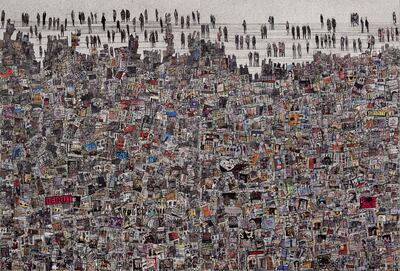
Despite these chronological divisions, works from different generations of artists appear across the different rooms. This allowed the curators to exhibit the work of lesser-known artists alongside the masters, but may be confusing for visitors.
The exhibition marks the inauguration of the Institut du Monde Arabe's Espace des Donateurs on the lower levels. For this, the museum commissioned Lebanese architect and musician Carl Gerges to design the exhibition space. “Once you go down the stairs, you go from the avant-garde and Brutalist world of Jean Nouvel [the architect who designed the building] to one that resembles us today,” Gerges says. “It is archaic, warmer and more human.”
The walls are painted with earthy colours, recalling cultural heritage sites from Luxor to Baalbek and Palmyra. “What unites us in the Arab world is our ancient cultural heritage and our buildings made of earth, sand and stone,” he says. The paint itself was mixed with soil from Lebanon and display material was produced in Lebanon by local craftsmen.
Despite finding hope in Lebanon’s past, Lemand is ambivalent about its future. “We tried to help artists because we are from the arts sector. It’s not a big contribution, but this is what we could do,” Lemand says. “Yet at present, two million people are living in poverty and are at risk of disease and starvation.”
Lemand also hopes the show will travel to other institutions internationally. Restagings are currently being discussed with institutions in Singapore, Morocco and the US. “The Institut owns the most important collection of art from the Arab world," he says. "Our goal is to ensure these works are shown overseas.”
